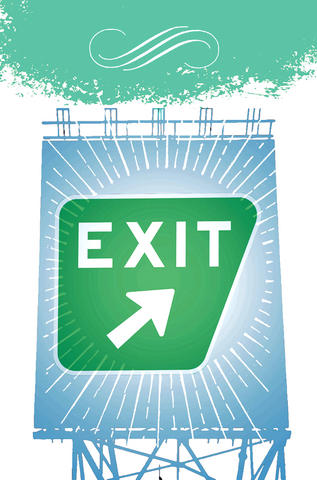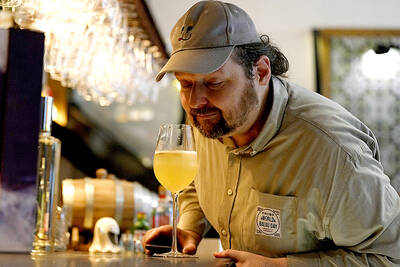How are people too sick to reap meaningful pleasure from life able to control their death?
Many seeking such control are take-charge people who consider quality of life more important than quantity. They do not want their hard-earned money squandered on costly, yet hopeless, treatments. They do not want to keep their bodies alive when their minds have died. They do not want to die under circumstances they consider inhumane, hooked up to all sorts of medical apparatus, unable to control bodily functions or to communicate with loved ones.
The desire to hasten death is not uncommon among the terminally ill. In a 1995 study of 200 such patients, 44 percent occasionally wished for death soon, although only 9 percent expressed "a serious and pervasive wish to die."

As of this writing, Oregon is the only US state that allows doctors to assist in the death of terminally ill patients. But as was apparent from the many e-mail messages and letters I have received on this issue, not all who wish to dictate when they will take their last breath would be considered terminally ill, likely to die within six months. Some are terminally unable to enjoy life because of incurable, progressive or incapacitating ailments like metastatic cancer; amyotrophic lateral sclerosis, or Lou Gehrig's disease; and advanced cases of Parkinson's disease, multiple sclerosis or emphysema. Some are looking down the tunnel of ever-worsening dementia and want to leave while they have something to say about it.
For example, a doctor wrote about a patient hospitalized with an advanced case of the autoimmune disease scleroderma. The man, who was being treated with high doses of prednisone, could barely swallow and viewed the quality of his life as so minimal that he no longer wanted to live. The day after his son's bar mitzvah, he said it was time for him "to leave this earth," and he refused any further treatment. A psychiatrist attested to the fact that the man was not depressed but was merely tired of living in such a debilitated state. The request to terminate treatment was honored; the man soon died.
NOT ALWAYS SO SIMPLE
If only it were always so simple. Patients in nursing homes, for example, often come up against "house rules" that insist upon artificial nutrition and hydration for those who stop eating and drinking. Hospitalized or home-bound patients who ask their doctors to help them die, either by stopping treatment or by supplying a lethal dose of medication, typically confront a stone wall.
Most doctors see themselves as forces of life, not death. And the fear of prosecution among those who might otherwise be willing to supply patients with lethal doses of sedatives, however gradually, is all too realistic.
A 62-year-old woman wrote that her 90-year-old mother told her almost daily that she had "had enough"; she has had a good life but now no longer feels her life is worth living. She constantly asks her son-in-law, a physician, "Isn't there something you can give me to help me get out of here already?"
"In this world of modern technology," her daughter wrote, "where medical advances now provide the ability to keep individuals alive indefinitely, frequently without consideration for the quality of that life, I believe the time has come to address the issue of what you refer to as a 'graceful exit.'"
Two prominent organizations that respond to those who face end-of-life issues, including a desire to hasten their own deaths - Compassion & Choices and Final Exit Network - are different in philosophical approach and the services they provide.
Compassion & Choices (www.compassionandchoices.org) has regional teams throughout the US.
As described by Judith Schwarz, a registered nurse and clinical coordinator for Compassion & Choices of New York, people seeking assistance are visited by a trained volunteer, who reviews a variety of end-of-life options.
The organization "does not advertise and has no agenda," Schwarz said in an interview, adding, "We don't pressure or suggest, merely provide information."
When mentally competent, terminally ill and suffering patients are certain about their desire to hasten death and their families are not opposed, the route often suggested is to stop eating and drinking, both naturally and artificially. There are no legal or moral obstacles to this route in the US, which most often results in a peaceful death within two weeks. This method also gives patients an unrushed opportunity to say goodbye to their loved ones or to change their minds about dying before it is too late.
ENDING WHAT SUSTAINS LIFE
In their thorough and compassionate book on end-of-life options, To Die Well, Sidney Wanzer and Joseph Glenmullen of Harvard University Health Services, note that refusal of hydration is faster and less distressing than starvation in hastening death.
Schwarz pointed out that 1.3 million people die each year in American hospitals "as a consequence of someone's decision to withhold or withdraw life-sustaining treatment." Patients can refuse unwanted treatment if they are mentally competent, or a health care agent can make the request for them if the patients had previously completed a living will and health care proxy.
If the doctor in charge refuses to cooperate, the patient or health care agent can request a transfer to another doctor who would be willing to support the patient's choice.
An oft-used route for patients with intolerable pain or anxiety near the end of life is the use of high doses of opiates to reduce suffering, which can hasten death from respiratory suppression. A 1997 Supreme Court decision, Vacco vs Quill, suggested that this practice was lawful if the primary purpose was to relieve suffering.
But amassing adequate doses of sedatives, once popular among patients seeking to hasten their death, is now rarely a viable option since doctors who prescribe them often or in large amounts for particular patients risk prosecution by the Drug Enforcement Agency. The method is limited to those able to swallow dozens of pills within a few minutes.
Wanzer and Glenmullen devote a chapter to the use of helium, an especially rapid method of ending life promoted by the Final Exit Network. Like Compassion & Choices, which provides all kinds of help for people nearing the end of life, the network relies on trained volunteers, but it is limited to helping suffering individuals hasten their own deaths.
The network's Exit Guide program accepts members with various incurable diseases that cause intolerable suffering. Members must be "cognitively functional," "physically strong enough to perform the required tasks" and "able to procure" the needed items.
Helium, when inhaled in place of oxygen, results in a loss of consciousness within a minute and heart stoppage in 15 minutes without causing the unpleasant sensation of air hunger, the authors reported. For further information about the network visit www.finalexitnetwork.org.

Behind a car repair business on a nondescript Thai street are the cherished pets of a rising TikTok animal influencer: two lions and a 200-kilogram lion-tiger hybrid called “Big George.” Lion ownership is legal in Thailand, and Tharnuwarht Plengkemratch is an enthusiastic advocate, posting updates on his feline companions to nearly three million followers. “They’re playful and affectionate, just like dogs or cats,” he said from inside their cage complex at his home in the northern city of Chiang Mai. Thailand’s captive lion population has exploded in recent years, with nearly 500 registered in zoos, breeding farms, petting cafes and homes. Experts warn the

No one saw it coming. Everyone — including the Chinese Nationalist Party (KMT) — expected at least some of the recall campaigns against 24 of its lawmakers and Hsinchu Mayor Ann Kao (高虹安) to succeed. Underground gamblers reportedly expected between five and eight lawmakers to lose their jobs. All of this analysis made sense, but contained a fatal flaw. The record of the recall campaigns, the collapse of the KMT-led recalls, and polling data all pointed to enthusiastic high turnout in support of the recall campaigns, and that those against the recalls were unenthusiastic and far less likely to vote. That

The unexpected collapse of the recall campaigns is being viewed through many lenses, most of them skewed and self-absorbed. The international media unsurprisingly focuses on what they perceive as the message that Taiwanese voters were sending in the failure of the mass recall, especially to China, the US and to friendly Western nations. This made some sense prior to early last month. One of the main arguments used by recall campaigners for recalling Chinese Nationalist Party (KMT) lawmakers was that they were too pro-China, and by extension not to be trusted with defending the nation. Also by extension, that argument could be

The centuries-old fiery Chinese spirit baijiu (白酒), long associated with business dinners, is being reshaped to appeal to younger generations as its makers adapt to changing times. Mostly distilled from sorghum, the clear but pungent liquor contains as much as 60 percent alcohol. It’s the usual choice for toasts of gan bei (乾杯), the Chinese expression for bottoms up, and raucous drinking games. “If you like to drink spirits and you’ve never had baijiu, it’s kind of like eating noodles but you’ve never had spaghetti,” said Jim Boyce, a Canadian writer and wine expert who founded World Baijiu Day a decade